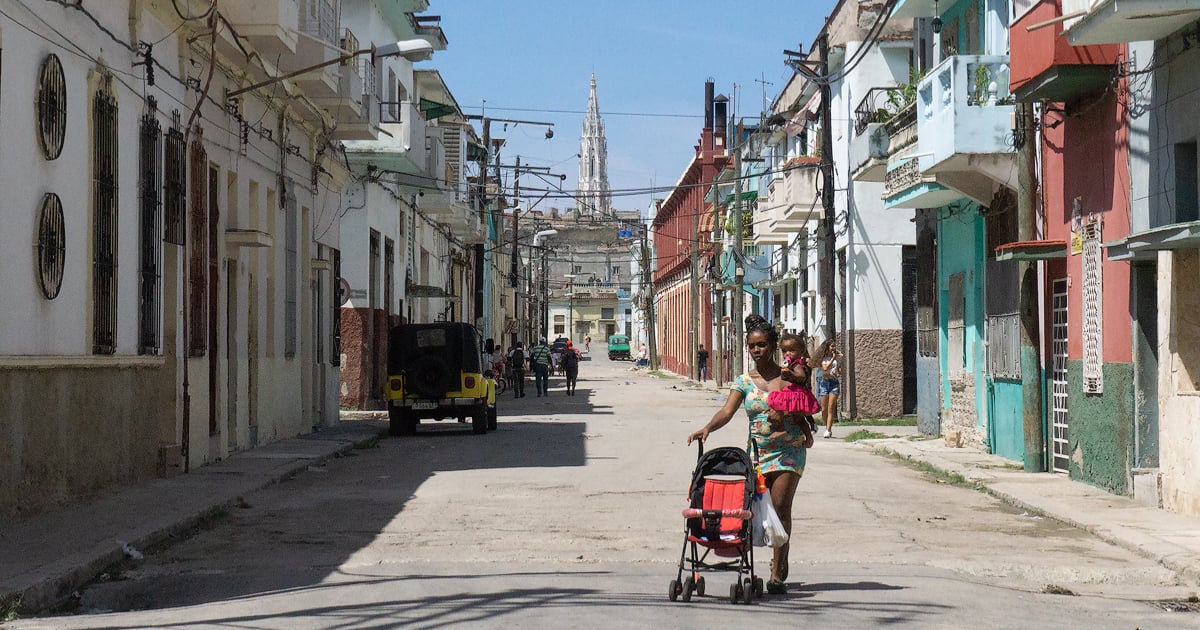
Related videos:
The resident population in Cuba has alarmingly decreased in recent years, and according to a new independent demographic study, it now stands at just below eight million people. This represents a 24% decline in just four years, a figure that the author compares to war scenarios.
The study, conducted by the renowned Cuban economist and demographer Juan Carlos Albizu-Campos, and to which EFE had access, estimates that by the end of 2024, there will be 8,025,624 people living on the island, significantly lower than the 9,748,532 reflected in the official Cuban statistics.
Albizu-Campos warns that a population contraction of this magnitude "has only been observed in contexts of armed conflict," and suggests the need to analyze the situation in Cuba not as a demographic crisis but as a full-blown systemic crisis.
Mass migration, the driving force behind the collapse
One of the central factors behind the population collapse is the unprecedented migration exodus. The report estimates that 545,011 people left the Island in 2024 alone, double the official figure recognized by the government, which only accounts for migrants heading to the United States and overlooks those who are departing for other countries.
The demographer supports his estimate by combining official U.S. data on border arrivals and projecting that around 45.5% of the total Cuban migrants are heading to the United States, while the rest migrate to destinations such as Mexico, Spain, Uruguay, Serbia, among others.
"Demographic emptying" and "policrisis"
In the study, partially published on the scientific platform ResearchGate, Albizu-Campos describes the phenomenon as a "demographic emptying" resulting from a "quasi-permanent polycrisis" that the country is experiencing. For the author, depopulation is currently a leading indicator of the collapse of other structural variables in Cuban society, acting as "the canary in the coal mine."
Furthermore, the researcher harshly questions the reliability of the official figures and warns that the Cuban government underestimates the real impact of migration and the extent of the population crisis, thus hindering the formulation of effective policies.
Without a census, without answers
Cuba has not conducted a population census since 2012, and the one scheduled for 2022 has been postponed several times due to a lack of resources. Authorities have expressed their intention to carry it out this year, but experts doubt that it can be done with the necessary rigor.
In 2023, Albizu-Campos had already warned that the population had fallen by 18% in two years, while the National Office of Statistics and Information (ONEI) later acknowledged that the actual population had dropped below ten million, contradicting previous estimates that placed it around eleven million.
Official figures under scrutiny
This independent study directly contradicts the data provided by the Cuban regime, which is focused on minimizing the actual impact of the exodus and the economic collapse on the population.
According to the National Office of Statistics and Information (ONEI), by the end of 2023, the effective population in Cuba was 10,055,968 people.
However, even the official figures reveal that Cuba is undergoing an unprecedented demographic crisis. In 2024, the country lost more than 300,000 inhabitants and recorded its lowest birth rate in decades. The ONEI confirms an accelerated process of population decline that has been exacerbated by the economic crisis, aging, and mass emigration.
Albizu-Campos argues that official statistics severely underestimate the impact of emigration by only counting those who leave for the United States, neglecting the tens of thousands who emigrate to other destinations. In contrast, his study estimates that 545,011 people left Cuba in 2024, more than double the figure recognized officially.
An island that empties
The country has been facing a profound economic crisis for the past five years, characterized by shortages of food, medicine, fuel, and cash, uncontrolled inflation, economic contraction, prolonged power outages, and an increasing dollarization that heavily impacts vulnerable sectors.
All of this has pushed hundreds of thousands of Cubans to leave the country in search of stability and opportunities, leaving behind a Cuba that is becoming emptier, with social and economic consequences that are already being felt in all spheres: from the labor market to the accelerated aging of the population.
For Albizu-Campos, ignoring the demographic collapse is to close one’s eyes to a phenomenon that not only reflects public dissatisfaction but also jeopardizes the future viability of the country.
Frequently Asked Questions about the Demographic Crisis in Cuba
How many inhabitants has Cuba lost in recent years?
Cuba has lost approximately a quarter of its population in the last four years. This represents a 24% decrease in the population residing on the island, according to an independent demographic study. Mass migration is one of the main factors behind this demographic decline.
What is the main cause of the population decline in Cuba?
The main cause of the population decline in Cuba is the mass exodus of Cubans. In 2024, it is estimated that 545,011 people left the island, double the number officially acknowledged by the government. The economic crisis, lack of opportunities, and political repression are factors driving this emigration.
What challenges does Cuba face due to the aging of its population?
The aging population in Cuba creates a greater economic dependence on the elderly. This puts pressure on the social and economic services of the country, which must adapt to a predominantly aging population. The sustainability of the pension system and the labor market are also affected by this demographic imbalance.
How is the demographic crisis affecting the Cuban economy?
The demographic crisis negatively impacts the Cuban economy by reducing the available workforce. This limits economic growth and increases the burden on the state to provide services and subsidies to an aging population. The decrease in the young population also means fewer entrepreneurs and less innovation, stalling the country's economic development.
Filed under: